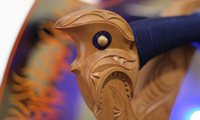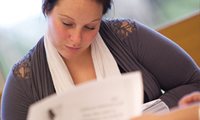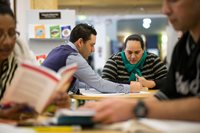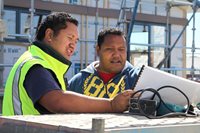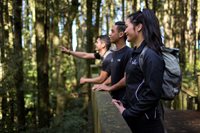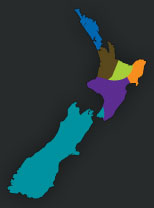Te Wānanga o Aotearoa tauira (students) are using traditional methods in a year-long trial to protect kaimoana in the Ohiwa Harbour from a voracious pest.
The tauira from Ōpōtiki are working with staff from NIWA, the Bay of Plenty Regional Council, iwi and local communities to ensure their kuku (mussels) are kept safe from an 11-legged starfish Coscinasterias muricata which is decimating seafood stocks.
The trial, which began earlier this month, is testing traditional materials including harakeke, tī kouka and kiekie, which are being used as spat lines.
The tauira made the spat lines, which are floated using a native cork called hauama, as part of their Kāwai Raupapa Level 3 programme under the guidance of kaiako of Roka Ngarimu-Cameron.
Mussel larvae attach themselves to the spat lines which float on the water away from the starfish predators, that dine on bottom-dwelling marine life.
The group also created cages that protect mussels in their beds from other sea life.
Dr Kura Paul-Burke, a NIWA marine ecologist of Ngāti Awa said the aim of the trial is to determine which spat lines performed best in attaching mussel larvae and if the mature mussels grown on the spat lines could be relocated and survive in other parts of the harbour.
The trial will also monitor the effectiveness of the cages in protecting the mussels.
“Globally our world is deteriorating so this is a trial using lots of different materials and different methods. It’s exciting because we are using traditional methods alongside western science methods,” said Dr Paul-Burke.
“This is a collaboration between NIWA, the Bay of Plenty Regional Council, iwi and communities who are all working together to get a better understanding of how to manage and sustain our taonga.”
The trial will be critical to the future for the Ohiwa Harbour as mussels are not only a food source but play an important part in protecting the harbour’s biodiversity by creating reefs and acting as a biofilter cleaning the waters.
Dr Paul-Burke, who has monitored the harbour’s deteriorating health since 2007, said if the trial is successful it would be a first.
“We are really hopeful for our natural spat lines in a world where plastics is a huge problem. They’ll be the first of their kind if they work.”
Ms Ngarimu-Cameron said her tauira were excited to learn traditional net weaving techniques that could be applied to address a serious contemporary issue.
“These starfish are smashing everything in there. They wrap their legs around the seafood and just crush them.”
“So, for our tauira to make these things using traditional materials and techniques and for us to get away from using plastic and rubber and use what our ancestors did, it’s a really good thing.”


